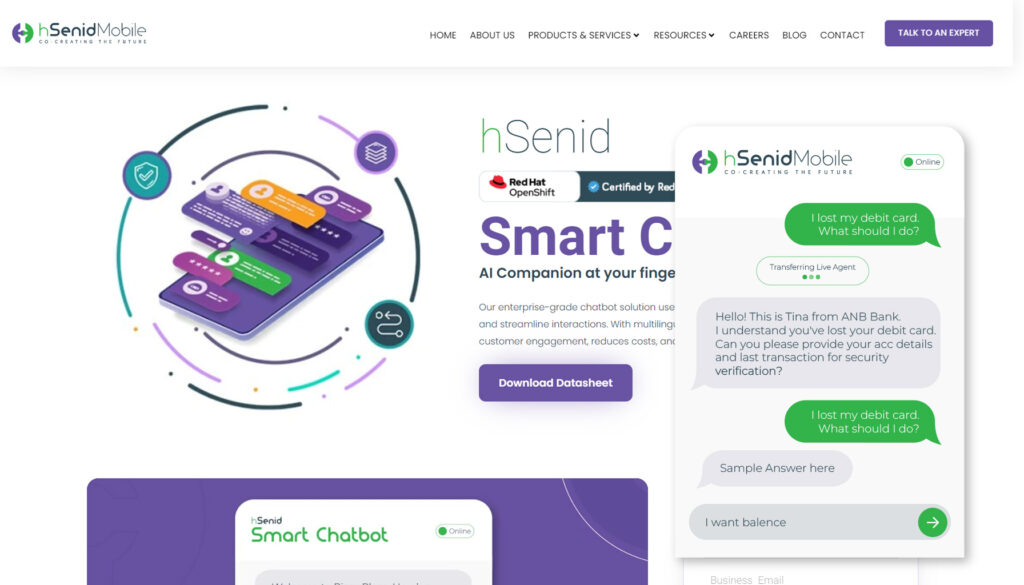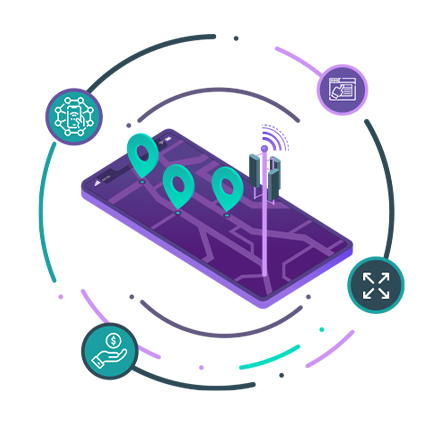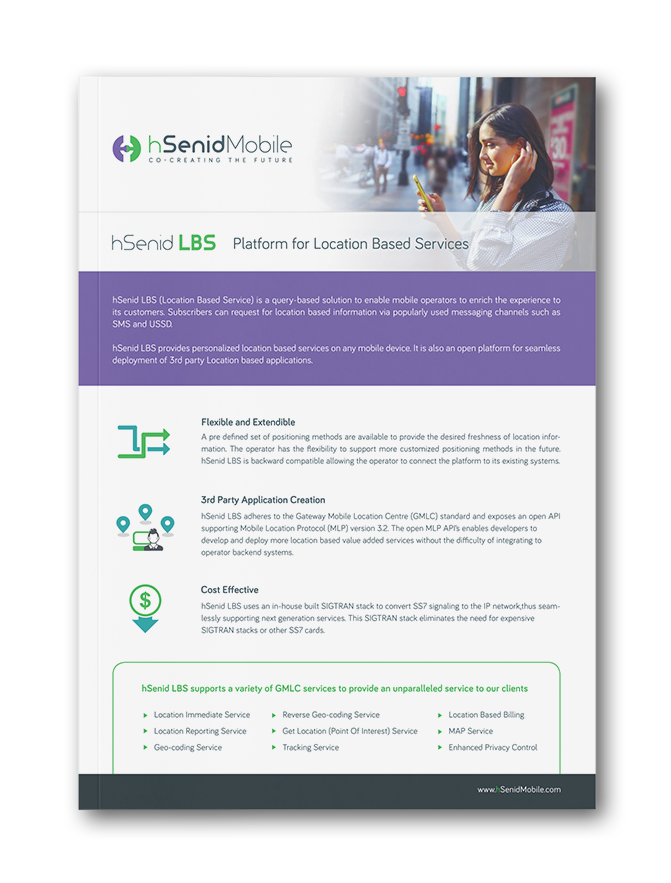The telecom sector has transformed because of location-based services (LBS),
enabling mobile operators to enhance service offerings, improve operational
efficiency, and unlock new revenue streams. Telecom companies are using LBS in
telecom more than ever to drive digital transformation, with the global LBS
market projected to reach $318.6 billion by 2030, growing at a CAGR of 24.3%.
LBS is a game-changer for the telecom sector since it allows operators to
provide individualized services, expedite emergency response, and enhance
network performance.
Telcos can take advantage of hSenid’s Location-Based Services by merging with enterprises and third-party developers to offer subscribers more relevant, accurate, and useful information on real-time location.
The significance of LBS will only increase as 5G and IoT adoption picks up speed, opening up countless opportunities for efficiency and creativity. By adopting LBS now, telecom companies will be in a strong position to take the lead in the digital age, offering top-notch services and opening up new business opportunities.
Telcos can take advantage of hSenid’s Location-Based Services by merging with enterprises and third-party developers to offer subscribers more relevant, accurate, and useful information on real-time location.
Key Benefits of LBS in the Telecom Industry
- Enhanced Customer Experience One of the most significant advantages of LBS in telecom is the ability to offer personalized and location-aware services. Research indicates that 70% of mobile users prefer personalized content based on location and 61% of smartphone users are more likely to shop at a store that sends location-based promotions. With LBS, telecom companies can offer location-based invoicing, targeted promotions, and personalized content depending on user preferences and behavior. Customer loyalty and user engagement both rise as a result.
- Improved Network Optimization and Coverage Telecom businesses can use real-time location data to monitor network performance thanks to LBS. Operators can determine high-demand locations and adjust network resources by monitoring user density and movement patterns.
- Emergency Services and Public Safety In emergency response circumstances, LBS is a vital enabler that aids authorities in locating callers. Telecom companies are required by law in several nations to offer Enhanced 911 services, which employ location data to determine the precise location of the caller.
- Location-Based Advertising and Monetization By providing location-based advertising (LBA) services, the LBS market enables telecom providers to participate in the $163.5 billion digital advertising market in 2026. Telecom networks can be used by brands to target consumers according to where they live, increasing the relevance and potency of advertising efforts.
- Fraud Prevention and Security LBS in telecom plays a crucial role in preventing fraud and enhancing security. Telecom operators can identify irregularities and indicate questionable activity instantly by examining location data. For instance, the system can set off alerts and stop possible fraud if a SIM card is unexpectedly used in a foreign nation without any previous travel activity.
Additionally, telecom providers can employ geo-fencing to automatically notify consumers when they reach particular areas. Sending pertinent ads, trip updates, and emergency notifications is a common usage for this capability. When a consumer enters a new nation, for instance, a mobile provider might alert them about roaming packages.
LBS is also essential for lowering network congestion and dropped calls. Operators can construct more network infrastructure when necessary and flexibly modify bandwidth allotment by comprehending location-based traffic distribution. Customers benefit from a more streamlined and dependable mobile experience as a result.
Telecom carriers might also collaborate with government organizations to offer disaster management solutions. For example, real-time location monitoring (LBS) can assist rescue crews in locating impacted individuals and effectively distributing aid during natural disasters. Authorities can utilize LBS to direct people to safe areas and send out mass messages in the case of an earthquake.
For instance, when customers are close to a mall, telecom companies and stores might work together to send them special discounts.
Additionally, telecoms can make money off of LBS data by providing businesses with insights-as-a-service. This information can be used by retailers, transportation companies, and event planners to comprehend consumer behavior and adjust operations accordingly.
LBS also aids in the fight against SIM switch fraud, in which scammers try to obtain a user’s phone number. Banks and telecom companies can drastically lower fraud-related losses by comparing a user’s location to transaction locations.
The Future of LBS
LBS is expected to grow in strength as 5G technology develops. 5G will improve real-time location monitoring with ultra-low latency and high-speed connectivity, enabling applications like smart cities and driverless cars. Furthermore, predictive analytics will be made possible by the combination of artificial intelligence (AI) and LBS, providing proactive solutions depending on user behavior.Conclusion
The adoption of LBS in telecom is transforming the industry, enabling operators to enhance customer experience, optimize networks, and unlock new revenue opportunities. LBS is a potent instrument that is influencing the direction of telecom services, from location-based advertising and smart city applications to fraud prevention and emergency response.The significance of LBS will only increase as 5G and IoT adoption picks up speed, opening up countless opportunities for efficiency and creativity. By adopting LBS now, telecom companies will be in a strong position to take the lead in the digital age, offering top-notch services and opening up new business opportunities.
Partner with hSenid for Advanced LBS Solutions
Leading supplier of state-of-the-art location-based services, hSenid assists telecom carriers in utilizing LBS to its maximum capacity. hSenid provides the know-how and technology to help you achieve your objectives, whether they be to improve consumer interaction, increase network performance, or generate new revenue streams. To find out how LBS may change your telecom company, get in touch with hSenid LBS right now.








